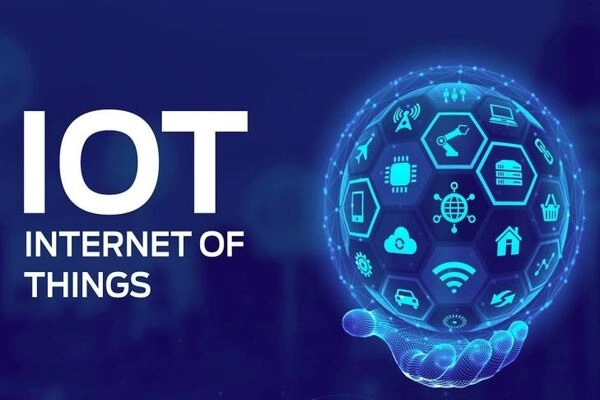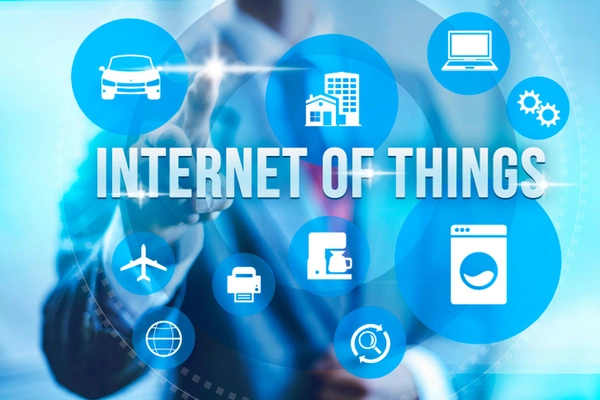IoT Architecture is the fundamental framework that enables smart devices to connect, communicate, and process data automatically. Thanks to this architecture, the Internet of Things (IoT) system operates smoothly—from data collection and transmission to analysis and visualization. Understanding IoT Architecture not only helps optimize system performance but also unlocks numerous real-world applications in both daily life and business.
What is IoT Architecture?
IoT Architecture (Internet of Things Architecture) is the foundational structure that allows billions of smart devices around the world to connect, interact, and exchange data seamlessly. It is a comprehensive system composed of multiple layers, each serving a specific function—from gathering data and transmitting it, to processing and presenting information to end users.

The main goal of IoT Architecture is to establish a stable, secure, and scalable operational framework that enables physical devices such as sensors, cameras, industrial machines, vehicles, and wearable devices to function seamlessly within a unified digital ecosystem.
In the following section, we will explore the fundamental structure of an IoT system, where each layer plays a vital role in maintaining the operation of this interconnected intelligent network.
Basic Structure of IoT Architecture
A complete IoT Architecture is typically built upon four main layers: the sensing layer, the network layer, the data processing layer, and the application layer. Each layer performs a specific function while remaining closely integrated to ensure a continuous and accurate flow of data throughout the entire system. Let’s take a closer look at each layer within this architecture.

Sensor Layer – Collecting Data from Devices
The sensor layer, also known as the physical layer, is the foundation of IoT Architecture. This is where sensors, actuators, and smart devices directly interact with the physical environment to collect data.
Examples include temperature, humidity, light, motion, and GPS sensors. These devices convert physical signals into readable digital data, such as “the room temperature is 28°C” or “motion detected in area A.” Once captured, this data is transmitted to the network layer for further processing.
The sensor layer plays a crucial role in IoT Architecture because it determines the accuracy and timeliness of the information gathered. Choosing the right sensors—with high sensitivity, durability, and precision—is a key factor in designing an efficient IoT system.
Network Layer – Transmitting Data Between IoT Devices
After data is collected, the network layer is responsible for transferring it from sensors to central processing systems or cloud platforms. Acting as the “backbone” of IoT Architecture, this layer ensures all devices communicate reliably and securely.
Various communication technologies are used in this layer depending on range, speed, and power requirements—such as Wi-Fi, Bluetooth, ZigBee, LoRa, NB-IoT, 4G/5G, or Ethernet.
Beyond simple data transmission, the network layer also manages security, routing, and packet loss prevention. A robust network infrastructure is essential to maintain high performance even when thousands of devices are operating simultaneously.
Data Processing Layer – Analyzing and Storing Information
Once data reaches the central system, the data processing layer takes over by analyzing, storing, and making intelligent decisions. This layer is often regarded as the “brain” of IoT Architecture.
At this stage, data is aggregated, cleaned, and analyzed using technologies such as artificial intelligence (AI), machine learning, big data, or cloud computing. The goal is to transform raw data into actionable insights that enable users or systems to respond appropriately.
For example, in a smart home system, if a sensor detects a high temperature, the data processing layer will trigger the air conditioner. In industrial settings, it can predict equipment failures or optimize production processes.
The more powerful the data processing layer, the faster, more accurate, and smarter the IoT Architecture can respond.
Application Layer – Displaying and Utilizing IoT Data
The final layer in IoT Architecture is the application layer, where data is presented and directly used by humans or other systems. This layer bridges the technical world with practical user needs.
Depending on the application, IoT data can be displayed on dashboards, mobile apps, or integrated with enterprise management systems such as ERP or CRM.
Examples include:
- In smart agriculture, users can monitor soil moisture via a mobile app.
- In logistics, managers can track the location and condition of goods in real time.
- In healthcare, doctors can remotely view patients’ heart rate data.
The application layer is where the true value of IoT Architecture is realized—turning data into action, and action into measurable results.
Key Considerations When Designing IoT Architecture
Building an effective IoT Architecture goes beyond simply connecting devices. It requires careful consideration of multiple technical and operational factors. Some important aspects to consider include:

- Scalability: The system must be able to scale easily as the number of devices increases, without reducing performance or causing service interruptions.
- Security: IoT systems often handle sensitive data, making encryption, authentication, and information protection a top priority.
- Interoperability: Different devices and platforms should be able to communicate with each other using common protocols.
- Reliability & Availability: IoT systems need to operate continuously, especially in critical sectors such as healthcare, transportation, or manufacturing.
- Energy Efficiency: For battery-powered devices, particularly sensors, optimizing energy consumption is essential.
- Cost and Operational Efficiency: Balancing initial investment, maintenance costs, and long-term operational efficiency is crucial for the feasibility of IoT Architecture.
A well-designed IoT Architecture ensures not only efficient system operation but also ease of maintenance, future upgrades, and scalable expansion.
Frequently Asked Questions About IoT Architecture

- Why is a clear IoT Architecture necessary?
A well-defined IoT Architecture helps developers accurately map data flows, allocate resources efficiently, and ensure security. Without a solid structure, systems are prone to interruptions and difficult to scale.
- How many layers are in IoT Architecture?
The most common model has four layers: sensing, network, data processing, and application. Some models may add additional layers, such as security or middleware, to meet specific requirements.
- Is IoT Architecture applicable to all industries?
Yes. From smart homes, healthcare, agriculture, and transportation to Industry 4.0, IoT Architecture can be applied with adjustments tailored to objectives and scale.
- What are the biggest challenges in implementing IoT Architecture?
Key challenges include data security, high investment costs, managing large-scale devices, and maintaining high network stability.
- What is the future of IoT Architecture?
In the future, IoT Architecture will become smarter and more distributed. Technologies such as edge computing and AI embedded in devices will reduce latency, accelerate processing, and optimize overall system performance.
IoT Architecture is the core foundation that enables the Internet of Things to operate efficiently, connecting billions of devices worldwide. Understanding each layer and key design factors allows businesses to build IoT systems that are stable, secure, and flexible. From smart homes and cities to modern factories, all rely on IoT Architecture to transform data into actionable value, driving a smarter, more connected world every day.
